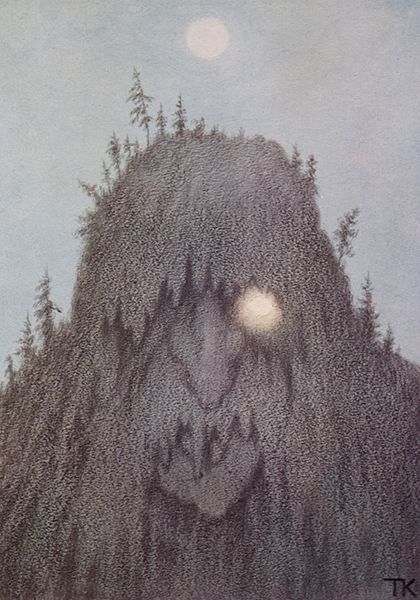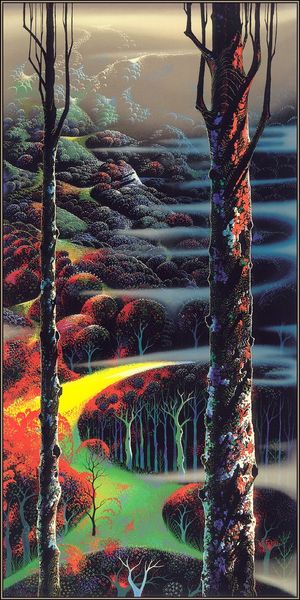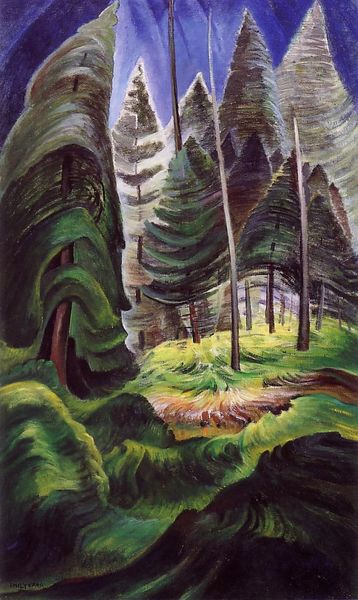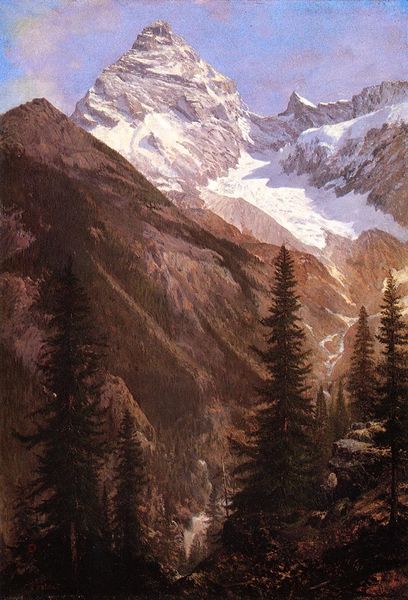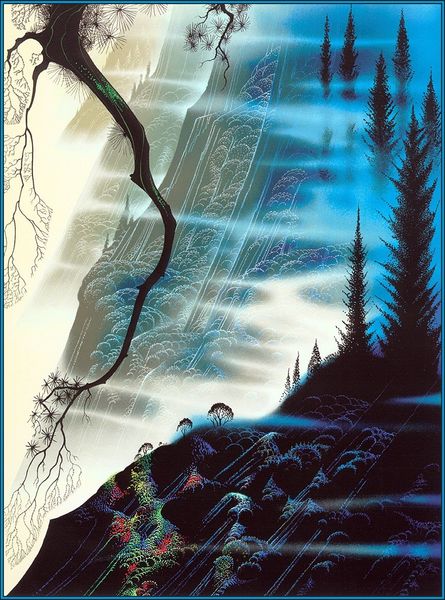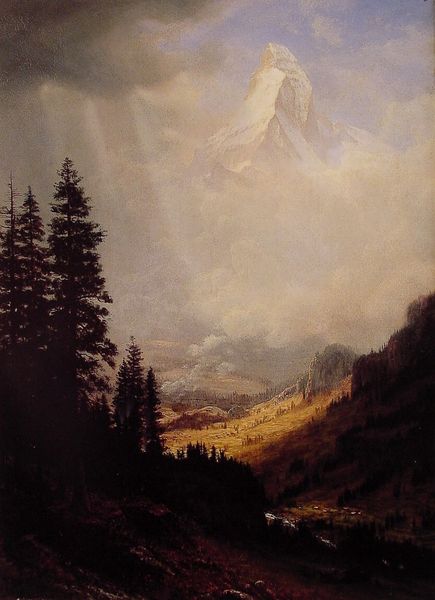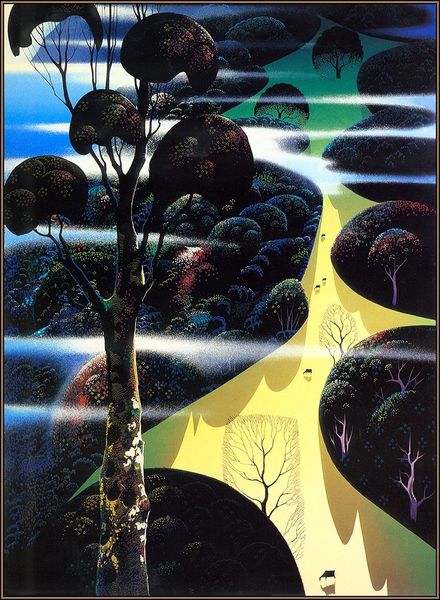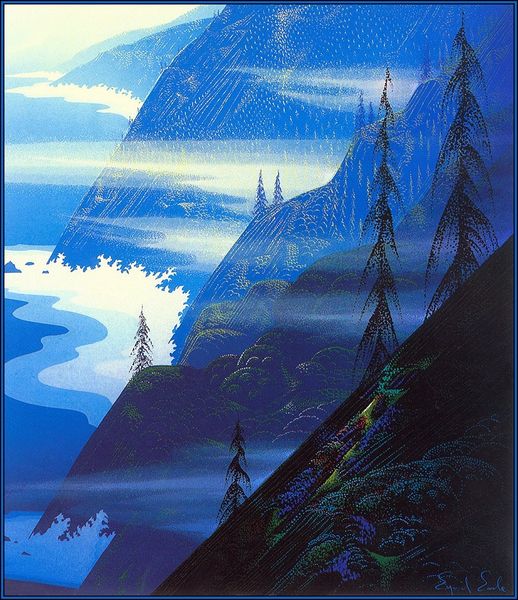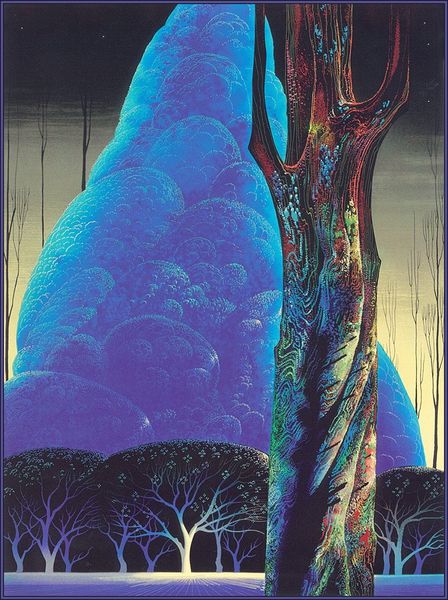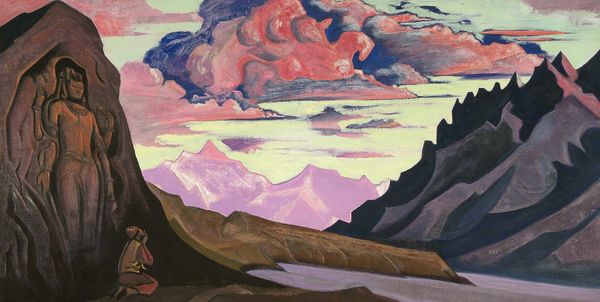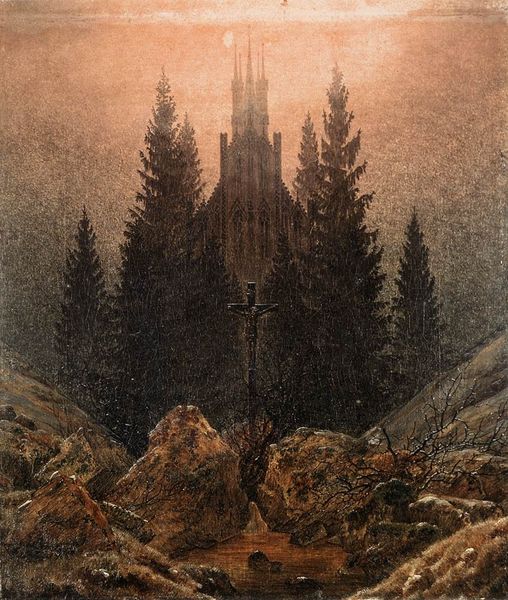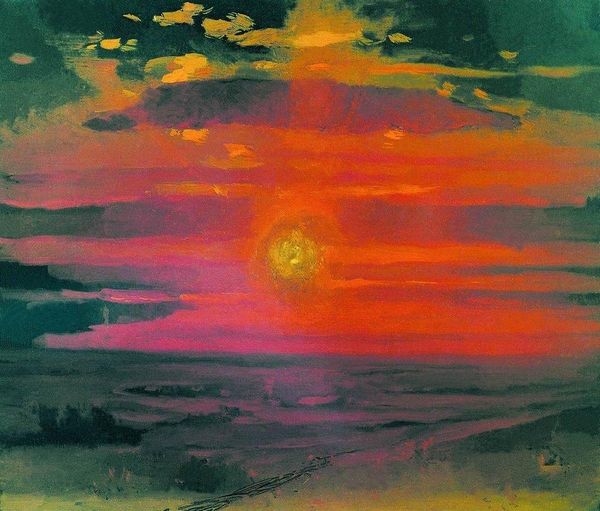
Cross in the Mountains (Tetschen Altar) 1808
0:00
0:00
caspardavidfriedrich
Gemäldegalerie Alte Meister, Dresden, Germany
painting, oil-paint
#
painting
#
oil-paint
#
landscape
#
figuration
#
oil painting
#
romanticism
#
history-painting
Copyright: Public domain
Curator: This is Caspar David Friedrich's "Cross in the Mountains," painted around 1808, a compelling oil on canvas now housed in the Gemäldegalerie Alte Meister in Dresden. Editor: There’s a somber beauty to this piece. The colors are muted, a kind of dusky rose, and the scene—a mountain peak crowned with a cross—evokes a feeling of profound solitude, doesn’t it? Curator: Absolutely. Friedrich’s artistic project often revolved around a national and religious understanding that he constructed through landscapes such as this. The placement of the cross atop the mountain becomes intrinsically connected with not only spiritual power but also geographical sovereignty. How might we reconcile these political, aesthetic, and religious narratives today? Editor: For me, the most prominent symbol here is light itself. Note how the sun’s rays emerge from behind the mountain, almost as if radiating directly from the cross. Friedrich, perhaps intentionally, connects the crucifixion with a form of transcendent enlightenment. It makes you consider the enduring potency of religious iconography and its capacity to be adapted. Curator: Exactly, and it also must be emphasized that this was initially created as an altarpiece – a challenge at the time given the prominence of landscapes – but think about that compositionally, too. How often are symbols and landscapes politically weaponized in contemporary art? How might it alter your view of his intent to recall that? Editor: Certainly. The combination is very powerful, prompting us to contemplate our relationship with nature and faith. But look, too, at the stark silhouettes of the fir trees – they reach toward the light, symbolizing resilience. Curator: The landscape is far from a passive backdrop; its forms are actively engaged with its time. What is so impactful about the symbol in the place and the time, and what is being said when those facets change across the ages? That kind of cultural contextualization allows one to consider the relationship with religion then and how we reconcile faith today. Editor: A work ripe for discussion! Friedrich's landscape becomes a powerful arena to explore questions about art's role, in not only mirroring society's ideologies, but how imagery helps build society through memory.
Comments
No comments
Be the first to comment and join the conversation on the ultimate creative platform.

